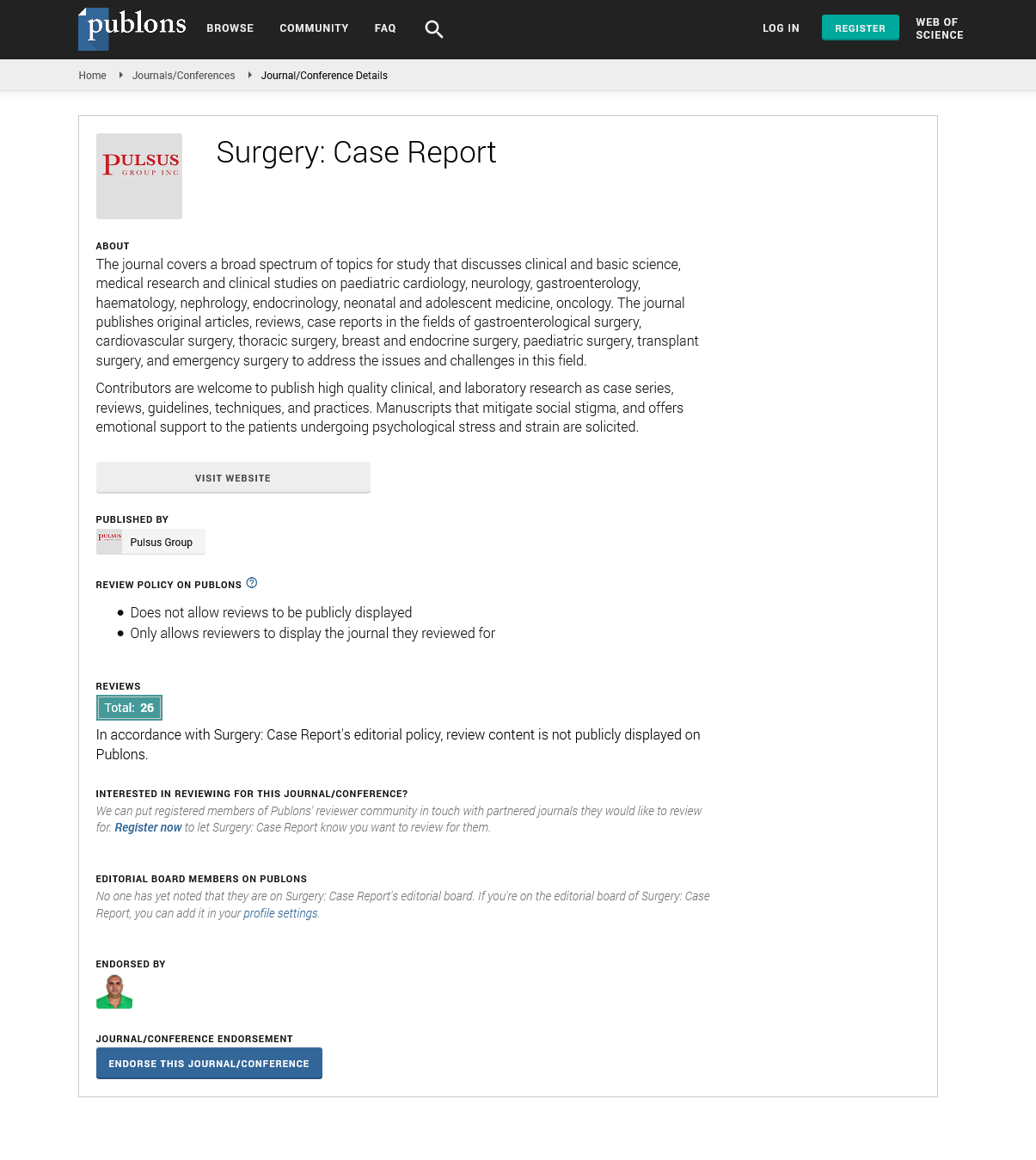Pelvic floor dysfunction
Received: 04-Mar-2021 Accepted Date: Mar 23, 2021; Published: 25-Mar-2021
Citation: Spandana V. Editorial Note for Pelvic floor dysfunction. Surg Case Rep 2021; 5:2.5.
This open-access article is distributed under the terms of the Creative Commons Attribution Non-Commercial License (CC BY-NC) (http://creativecommons.org/licenses/by-nc/4.0/), which permits reuse, distribution and reproduction of the article, provided that the original work is properly cited and the reuse is restricted to noncommercial purposes. For commercial reuse, contact reprints@pulsus.com
Editorial
Pelvic floor dysfunction is the lack of ability to control the muscles of pelvic floor. The pelvic floor is a sheet of muscle over which the rectum passes and develops the anal canal. The anal canal is enclosed by the anal sphincter complex, which is contained of both an internal and external element. The levator ani muscle (also known as pelvic diaphragm) is the major element of the pelvic floor. The levator ani muscle is essentially a pair of symmetrical muscular sheets consist of three individual muscles – the pubococcygeus, iliococygeus, and puborectalis. The puborectalis is a U-shaped muscle that attaches to the pubic tubercle (“the pubic bone”) and wraps round the rectum – under usual condition, this muscle is contracted, retaining a “bend” in the rectum and contributing to stool continence. The turn of bearing down to pass a bowel movement normally causes this muscle to relax, permitting the rectum to straighten. In adding to the rectum, the urethra, which transfers urine from the bladder to the external of the body, also passes over the front portion of the pelvic floor, as ensures the vagina in females. Pelvic floor dysfunction forces to contract muscles somewhat than relax them. As a result, patient may experience trouble having a bowel movement. If left untreated, pelvic floor dysfunction can be leads to distress, long-term colon injury, or infection. Though exact causes are still being researched, doctors can link pelvic floor dysfunction to circumstances or actions that weaken the pelvic muscles or tear connective tissue: traumatic injury to the pelvic region, childbirth, obesity, nerve damage, pelvic surgery. There are a number of symptoms associated with pelvic floor dysfunction include:
• urinary issues, such as the urge to urinate or painful urination
• constipation or bowel strains
• lower back pain
• pain in the pelvic region, genitals, or rectum
• discomfort during sexual intercourse for women
• pressure in the pelvic region or rectum
• muscle spasms in the pelvis
The most significant part of estimating a patient with suspected pelvic floor dysfunction is a systematic medical history and physical examination, as well as an examination of the pelvic floor. A significant aspect of the history contains a thorough obstetrical (child-bearing) history in women. This should seek out to identify a history of difficult deliveries, prolonged labor, forceps deliveries, and traumatic tears or episiotomies (controlled surgical incision in the middle of the rectum and vagina to avoid traumatic tearing during childbirth). A systematic history of the patient’s bowel patterns, containing diarrhea, constipation, or both, is also vital. Other key portions of the history include prior anorectal surgeries and the presence or absence of pain prior to, during, or resulting a bowel movement. After a complete history and physical examination, a number of tests may be done, depending on the patient’s symptoms is: Endoanal/Endorectal Ultrasound, Anorectal, Manometry Testing, Prudendal Nerve Motor Latency Testing, Electromyography (Emg), Video Defecography, Balloon Expulsion Test, Colonic Transit Study.






